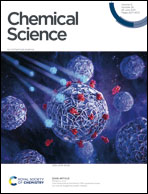Identification of extracellular nanoparticle subsets by nuclear magnetic resonance†
Abstract
Exosomes are a subset of secreted lipid envelope-encapsulated extracellular vesicles (EVs) of 50–150 nm diameter that can transfer cargo from donor to acceptor cells. In the current purification protocols of exosomes, many smaller and larger nanoparticles such as lipoproteins, exomers and microvesicles are typically co-isolated as well. Particle size distribution is one important characteristics of EV samples, as it reflects the cellular origin of EVs and the purity of the isolation. However, most of the physicochemical analytical methods today cannot illustrate the smallest exosomes and other small particles like the exomers. Here, we demonstrate that diffusion ordered spectroscopy (DOSY) nuclear magnetic resonance (NMR) method enables the determination of a very broad distribution of extracellular nanoparticles, ranging from 1 to 500 nm. The range covers sizes of all particles included in EV samples after isolation. The method is non-invasive, as it does not require any labelling or other chemical modification. We investigated EVs secreted from milk as well as embryonic kidney and renal carcinoma cells. Western blot analysis and immuno-electron microscopy confirmed expression of exosomal markers such as ALIX, TSG101, CD81, CD9, and CD63 in the EV samples. In addition to the larger particles observed by nanoparticle tracking analysis (NTA) in the range of 70–500 nm, the DOSY distributions include a significant number of smaller particles in the range of 10–70 nm, which are visible also in transmission electron microscopy images but invisible in NTA. Furthermore, we demonstrate that hyperpolarized chemical exchange saturation transfer (Hyper-CEST) with 129Xe NMR indicates also the existence of smaller and larger nanoparticles in the EV samples, providing also additional support for DOSY results. The method implies also that the Xe exchange is significantly faster in the EV pool than in the lipoprotein/exomer pool.



 Please wait while we load your content...
Please wait while we load your content...